耶鲁大学鲁道夫楼
2018-01-03黛博拉伯克
黛博拉·伯克
耶鲁大学鲁道夫楼
黛博拉·伯克
本文探讨了鲁道夫楼的历史,详细论述了保罗·鲁道夫的设计如何应对国际式风格的挑战。鲁道夫楼在1963年建成,对外开放后即受到赞扬和宣传,却在5年后被忽视,经历学生起义,又被大火损毁。2008年,经精心改造后,鲁道夫楼再次因其空间的复杂性、丰富的物质性及精妙的城市化受到称赞。
保罗·鲁道夫,耶鲁,建筑,粗野主义
鲁道夫楼是耶鲁大学建筑学院所在地,拥有一段迷人、波折的历史,如今它也为处在其质感独特的混凝土墙面内的建筑学及建筑历史学子带去启示。保罗·鲁道夫践行了建筑学院院长在塑造大学物质环境时发挥的躬亲之职,设计了当时尚未分离的艺术与建筑系的系馆,意在体现耶鲁大学在当代设计中应有的地位。
1960年代,国际式设计风格变得愈发标准化、去场所化,而鲁道夫却采取了一套与耶鲁大学校园及纽黑文市文脉深深交融的建筑语言及城市设计方法。他设计的高耸塔楼作为校园艺术区的收尾,另一端则毗邻斯特利特楼——即学院原来的维多利亚风格系馆(笔者创立的黛博拉·伯克及合伙人事务所后来扩建了这个区域,为耶鲁大学艺术学院设计了一栋新系馆)。当时这栋建筑称作艺术与建筑系馆,它的灯芯绒混凝土材质令人联想到耶鲁大学的哥特式石材学院建筑,以及校园中同样重要的现代建筑——如路易·康的耶鲁大学美术馆新馆。屋顶平台可尽揽纽黑文和临近的东石山及西石山风景。在鲁道夫的手中,现代主义变得果敢而自信,同时糅合了历史和所处的城市文脉。
建筑室内更加令人眼花缭乱。建筑共9层,有37个标高,呈螺旋形平面,环绕着一个多层通高空间,这里原本是建筑设计专教。充满生机的橙/红“辣椒”色地毯为粗犷的混凝土墙面带来反差性的温暖。建筑中遍布着经典雕塑作品的石膏件。一尊古老的密涅瓦石像俯视着空间中的建筑学子——这样一种戏剧化手法完全属于鲁道夫。建筑平面体现了耶鲁大学作为某种意义上的“美国包豪斯”的定位,将建筑作为“艺术之母”位于空间的中心,周围环绕着绘画、雕塑、平面设计、摄影和城市规划。
建筑在1963年开幕时引起了评论界轰动,成为媒体的宠儿,出现在《进步建筑》的封面上,并获得了《纽约时报》《建筑论坛》《建筑评论》等杂志的热情报道。后来它被视为粗野主义建筑的代表作。
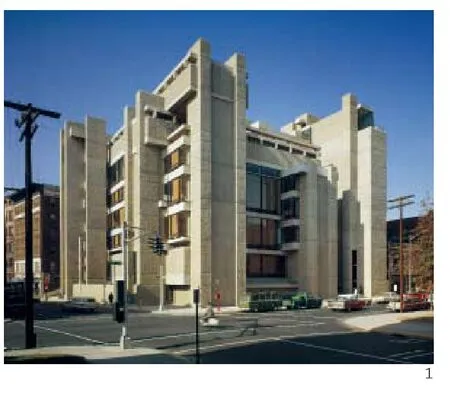
1 鲁道夫楼外景/Exterior views of Rudolph Hall(摄影/Photos: Richard Barnes)
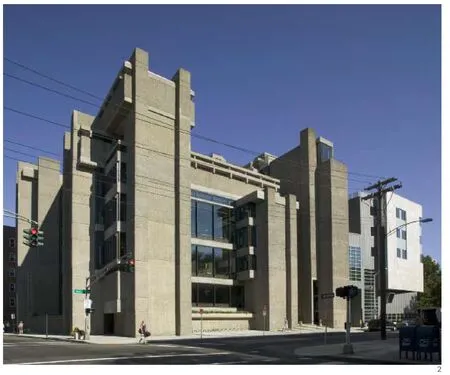
2 鲁道夫楼外景/Exterior views of Rudolph Hall(摄影/Photos: Richard Barnes)
Rudolph Hall, the home of the Yale School of Architecture, has a fascinating and fractious history, which today offers lessons to the students of architecture and architectural history that study within its textured concrete walls. Reflecting the hands-on role that the Dean of Architecture plays in the shaping of the physical campus of the University, Dean Paul Rudolph designed a building to house the then-united art and architecture departments that was intended to articulate Yale's position on the state of contemporary design.
In the 1960s, with the International Style becoming increasingly corporate and placeless, Rudolph developed an architectural language and urbanistic approach engaged deeply with the campus and the city of New Haven. His towering building bookends the campus arts district, with the other side formed by Street Hall, the school's original Victorian home (The author's firm, Deborah Berke Partners, eventually extended that district further with a new home for the Yale School of Art). Then known as the Art & Architecture (A&A) building, its corduroy-patterned concrete forms relate to Yale's masonry collegiate gothic colleges, as well as the campus' stock of modern buildings, like Louis Kahn's extension to the Yale Art Gallery. A roof terrace offers sweeping views of New Haven and the nearby East and West Rock hills. Modernism, in Rudolph's hands, was bold and assertive but also layered with history and embedded in its urban context.

3 剖面/Section
不过这种轰动并不持久,因为建筑使用过程中的现实问题逐渐凸显出来。将绘画专教安排在层高很低的七层、将雕塑专教安排在地下室,都被证明是有问题的,艺术系学生愤怒不已。空调系统和光线控制的不足使建筑空间在一年中大多数时候都很不舒适。鲁道夫院长的继任者查尔斯·摩尔用浅黄色替换了辣椒色地毯,并做了其他一系列不留情面的调整。建筑系学生在优雅的多层专教中支起隔墙、织物结构等临时设施,使其被嘲讽为“贫民窟”。最终,在1968年学生暴乱期间,一场大火席卷大楼,烧毁了学生作业,吞噬了建筑的3层楼。由于处在学校内部的骚乱和耶鲁及纽黑文不断加深的矛盾冲突之间,这场大火的原因——意外、激进主义还是恶意纵火——终不得知,对它的猜测延续至今。仅仅5年间,鲁道夫的英雄创举就几乎付之一炬了。
这场大火开启了学院及艺术与建筑系馆的新篇章。校领导发现鲁道夫楼已过于拥挤,于是决定将建筑学院与艺术学院分离,这一举措于1971年完成。同一年,艺术与建筑系馆在经过谦卑、简单的修缮后,重新为建筑学院所使用。
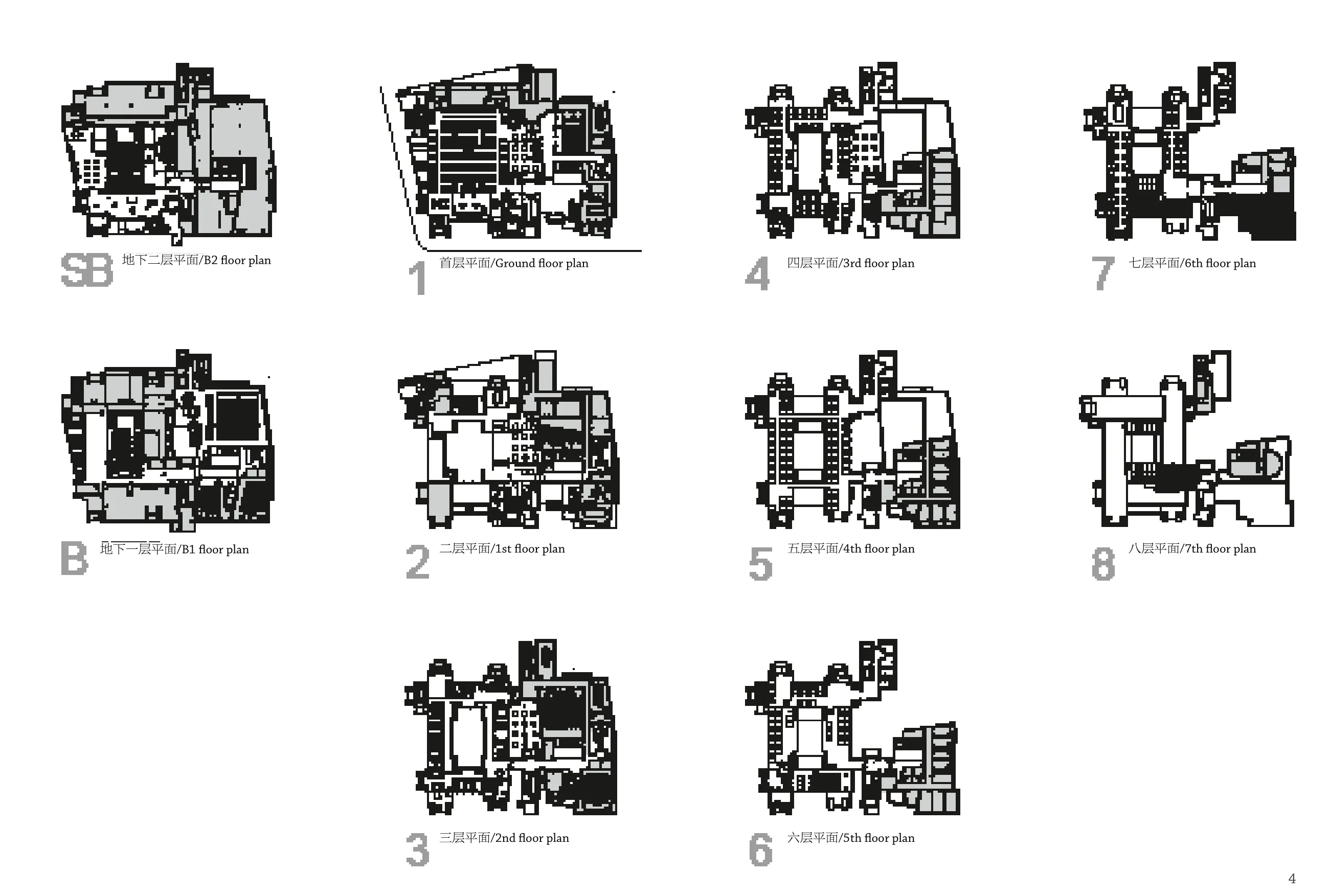
4 各层平面/Visiters plan
如今,1960-1970年代的骚动已渐行渐远,而艺术与建筑系馆已成为耶鲁大学不可分割的身份标识。它丰富的材料质感、空间复杂度和令人激动的城市形式如今都是学生们心中的骄傲,同时也是学院教师、讲师和评论者的教育工具。2008年,建筑在经过格瓦斯梅·西格尔一丝不苟的修复工作之后恢复了曾经的荣光,并重新命名为鲁道夫楼,以纪念其建筑师。原先的通高专教成为了集教育、评图和会议等多种功能为一体的空间(有时还可作为羽毛球场)。设计工作台环绕着这一空间的边缘,它不仅是学院的核心,也是鲁道夫的设计天才最生动的展示之地。在诺尔公司的赞助下,耶鲁大学最近又添置了伊夫斯厅(得名于平面设计师诺曼·伊夫斯,他的巨幅抽象壁画装点着空间中的一面墙)。伊夫斯厅也成了一处热门的会面和聚会场所,这体现了将学习、社交与合作相融合的当下趋势。
Inside, the building was even more dazzling. With nine floors, including a dizzying 37 levels, the spaces are arranged in a pinwheel plan around a multistory space that originally served as the architecture studio. Vibrant orange/red "paprika" – coloured carpeting added warmth and contrast to the rough, ridged concrete walls, and plaster casts of classical statuary were placed throughout the building. An ancient stone figure of Minerva peers down over the architecture students – a touch of drama that was pure Rudolph. The building's plan reflected Yale's identity as a kind of American Bauhaus, with architecture as the "mother of the arts" at its centre and painting, sculpture, graphic design, photography, and city planning playing supporting roles.
A critical hit and media darling when it opened in 1963, the building appeared on the cover ofProgressive Architectureand receiving glowing coverage in outlets including theNew York Times,Architectural Forum,The Architectural Review, and many other publications. It would later come to be considered a masterwork of Brutalism.
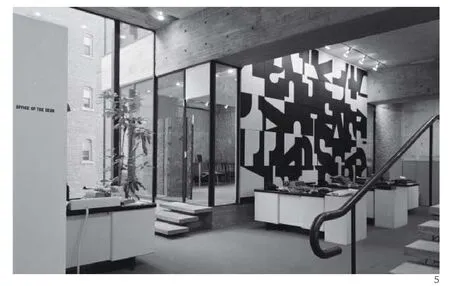
5 内景/Interior views

6 内景/Interior views
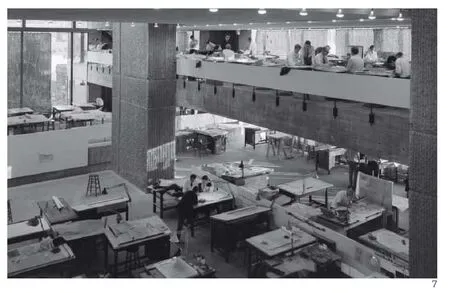
7 内景/Interior views
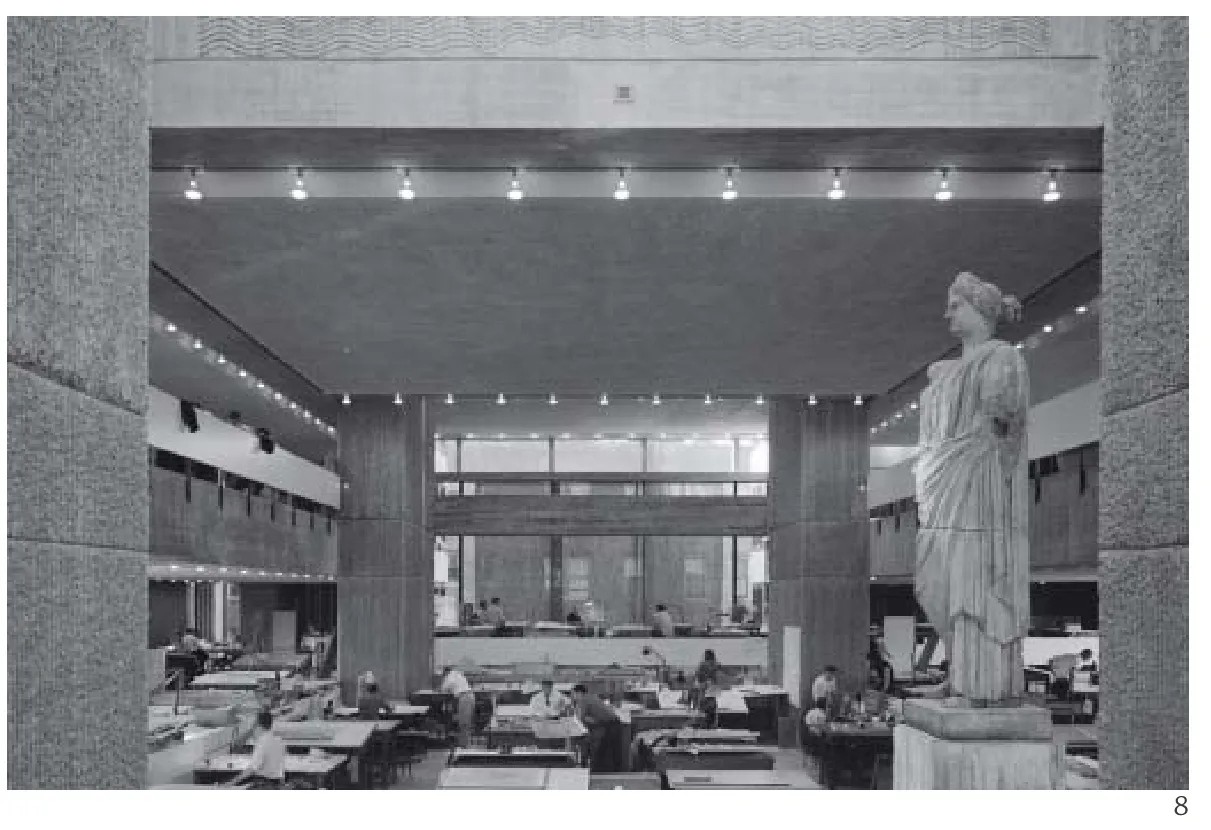
8 内景/Interior views
鲁道夫楼的轰动出现、快速衰落和最终复兴,体现了建筑塑造生活经验的力量,以及建筑师创造人性化、有意义的场所的责任——这些场所应为所有使用者服务,即便其一开始未能如此。在建成54年之后,鲁道夫楼终究找到了自己。□(黄华青 译)
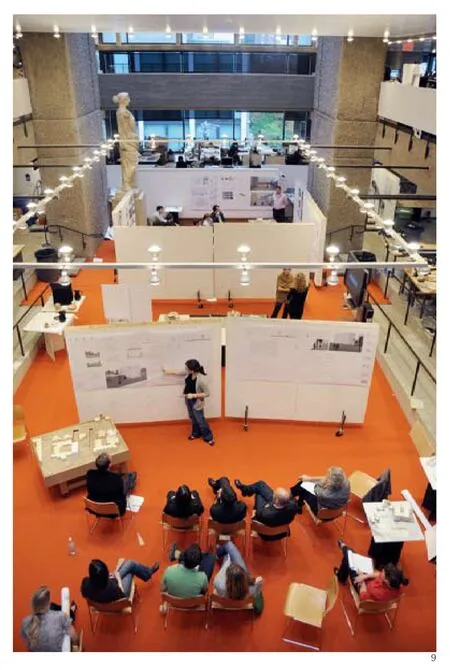
9 灵活的评图空间/Flexible review spaces
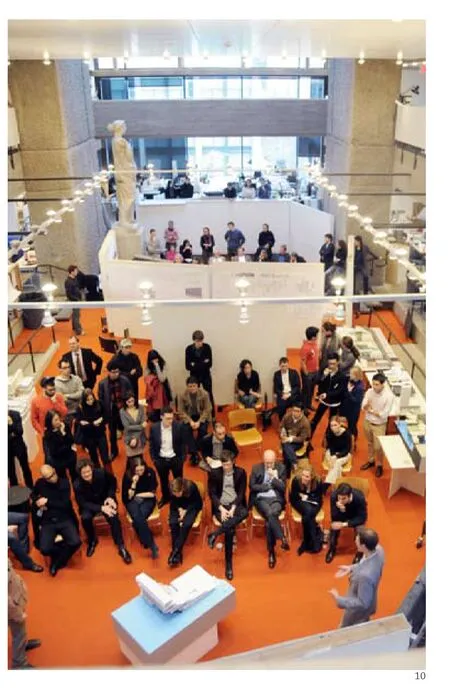
10 灵活的评图空间/Flexible review spaces
The fan-fare proved to be short-lived, as the realities of working in the building became apparent. The placement of the painting studios in the low-ceilinged seventh floor and the basement sculpture studios proved problematic; the art students were outraged. A lack of air conditioning and proper light controls made the building uncomfortable for much of the year. Rudolph's successor, Dean Charles Moore, replaced the paprika carpeting with beige and made a series of other unsympathetic alterations. The architecture students built dividers, fabric structures, and other temporary constructions in the elegant multistory studio, which was then dubbed "the favela." Finally, amid the student uprisings of 1968, a fire ripped through the building, destroying student work, gutting three floors of the building. Amid the tumult on campus and the increasing tension between Yale and New Haven, the cause of the fire – accident, activism, or arson – was never determined; speculation about its origins continue to this day. Within five years, much of Rudolph's heroic creation had been reduced to ash.
The fire began a new chapter for the school and the A&A. Recognizing that Rudolph's building was already overcrowded, the University divided the Architecture School and the Art School into separate entities, a process completed in 1971. That same year the A&A building was reoccupied by the Architecture School with a modest, prosaic renovation.
Today the tumult of the 1960s and 1970s seems a distant memory, and the A&A building is an indelible part of Yale's identity. Its rich materiality, spatial complexity, and thrilling urban form is now a point of pride for our students, and the building serves as a pedagogical tool for our professors, instructors, and critics. In 2008, building was returned to its full glory with a meticulous renovation by Gwathmey Siegel and renamed Rudolph Hall in honor of its architect. The multi-story studio space now functions as a multipurpose teaching, critique, and meeting space (and sometimes badminton court). With the studio desks ringing its perimeter, this space is the heart of the school and is the place where Rudolph's genius is on most vivid display. With the support of Knoll, Yale recently created the Ives Lounge (for the graphic designer Norman Ives, whose supergraphic mural adorns one wall). The lounge is a popular meeting point and hangout area, reflecting current attitudes about mixing studying, socializing, and collaboration.
The remarkable rise, rapid fall, and ultimate resurrection of Rudolph Hall speaks to the power of architecture in shaping experience, and the responsibility architects carry to make humane, meaningful places that honor all their users, even if they fail at first. Fiftyfour years after it opened, Rudolph Hall is just right.□

11 灵活的公共空间/Flexible public spaces(本文未标注照片均由耶鲁大学建筑学院提供/All unmarked photos are provided by Department of Architecture, Yale University)

12 灵活的公共空间/Flexible public spaces(本文未标注照片均由耶鲁大学建筑学院提供/All unmarked photos are provided by Department of Architecture, Yale University)
Rudolph Hall at Yale University
Deborah Berke
This paper explores the history of Rudolph Hall and the school's iconic home designed by Paul Rudolph, in details how Rudolph's design challenged the norms of the International Style. Rudolph Hall was completed in 1963, building opened to praise and fanfare, but within five years it fell into neglect, faced student revolts, and was gutted by a fire. Following a meticulous renovation in 2008, Rudolph Hall is now appreciated for its spatial complexity, rich materiality, and sophisticated urbanism.
Paul Rudolph, Yale, architecture, Brutalism
耶鲁大学建筑学院
2017-07-11
